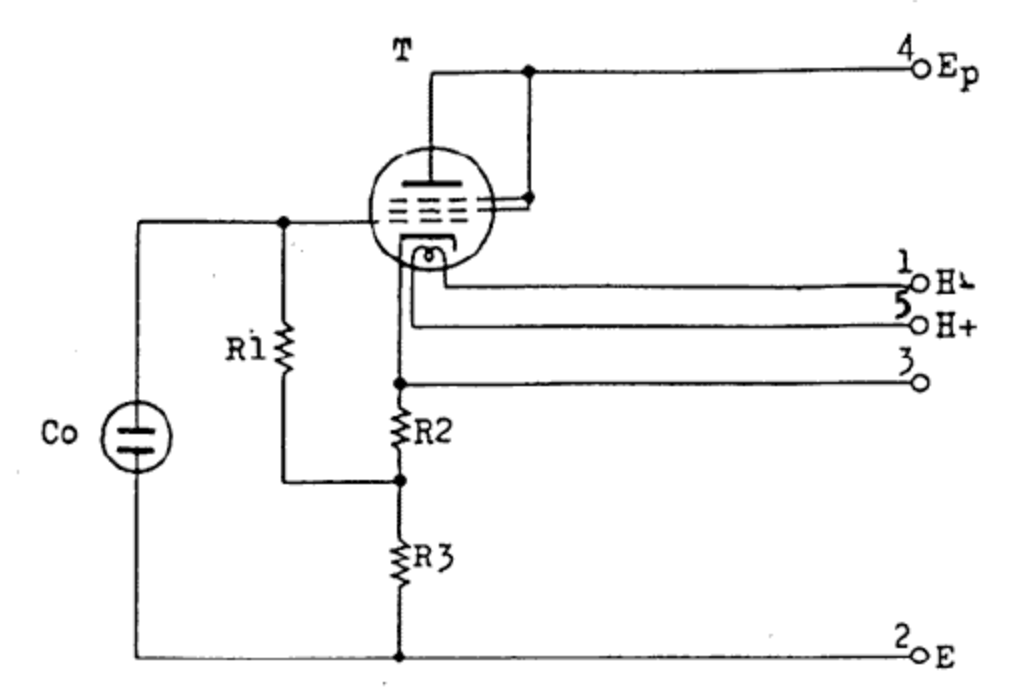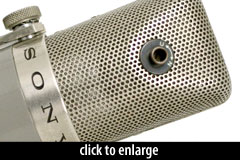
 Sony C-37A
Sony C-37A
Multi-Pattern Tube Condenser Microphone
The C-37A is a tube condenser microphone with an innovative mechanical control behind the capsule for polar pattern adjustment, and multiple EQ settings on the power supply.
The microphone was reportedly inspired by Neumann’s studio microphones of the era.
 The impedance circuit inside the microphone is deceptively simple: a 6AU6 pentode vacuum tube (wired as a triode) and a few resistors. The mic’s output coupling capacitor and audio transformer are located in the external power supply.
The impedance circuit inside the microphone is deceptively simple: a 6AU6 pentode vacuum tube (wired as a triode) and a few resistors. The mic’s output coupling capacitor and audio transformer are located in the external power supply.
During the mic’s lifetime, Sony redesigned the power supply multiple times: from the CP-2, to the CP-3, to the CP-3B.
We have not attempted to catalog all the differences between these generations, but we have seen that the CP-2 offered only 3 HPF modes (M1, M2, V), while later versions offered four (M, M1, V1, V2). Also, Sony documentation suggests that the CP-3B introduced a printed circuit board to the manufacturing process, implying that earlier revisions used point-to-point wiring.
The early CP-2 power supply offered a 3-position rotary switch to select the low-frequency rolloff point (aka “high pass filter”):
- “M2” - flat response (-2dB @ 40Hz)
- “M1” - rolloff 1 (-3dB @ 85Hz)
- “V” - rolloff 2 (-3dB @ 220Hz)
The CP-3B version of the external power supply offered a 4-position HPF switch:
- “M” - flat response (-2dB @ 30Hz)
- “M1” - rolloff 1 (-3dB @ 80Hz)
- “V1” - rolloff 2 (-3dB @ 200Hz)
- “V2” - rolloff 3 (-3dB @ 600Hz)
The HPF effects were created by switching among various sizes of output capacitors feeding the audio signal into the transformer primaries.
A second switch on the power supply allowed the mic’s high-frequency response to be attenuated. When enabled, the high-cut reduced 10kHz response by 5dB, and reduced 20kHz response by 7.5dB. A lamp on the power supply lights up to indicate that the high-frequency rolloff is active.
The CP-2 power supply had an output impedance of 200Ω. The CP-3B could be switched between 50Ω and 250Ω impedance.
The older CP-2 could be powered by 100VAC or 117VAC; the newer CP-3B could be switched among 100VAC, 117VAC, or 220VAC.
 The microphone’s “C-3” capsule represents a milestone for Sony, in that it was their first capsule to use Dupont Mylar film. It is a single-diaphragm design, with an tuned, adjustable acoustic chamber behind the diaphragm. The ports on the chamber can be adjusted by the user, to switch between Unidirectional and Omnidirectional polar patterns.
The microphone’s “C-3” capsule represents a milestone for Sony, in that it was their first capsule to use Dupont Mylar film. It is a single-diaphragm design, with an tuned, adjustable acoustic chamber behind the diaphragm. The ports on the chamber can be adjusted by the user, to switch between Unidirectional and Omnidirectional polar patterns.
The C37A was developed by Sony engineers in the early 1950s; early prototypes were used for symphonic recordings in 1954, and worked so well that the product was put into commercial production in Japan in 1955. The US release was in 1958, at an audio expo in Los Angeles.
Permalink: Sony C-37A
The mic was released in 1955.
Specifications
| Pickup Patterns | Pads & Filters |
|---|---|
|
Omnidirectional
(2 mV/Pa; 30 - 16,000) Cardioid (2.2 mV/Pa; 30 - 16,000) |
|
| Capsule Dimensions | Impedance | SPL/Noise |
|---|---|---|
| Capsule diameter: 37mm Diaphragm gauge: 6 microns |
200 Ohms (Low) |
| Weight | Length | Max Diameter | Interface(s) |
|---|---|---|---|
| 560g (19.75oz) | 192mm (7.56'') | n/a |
|
| Power Specifications |
|---|
|
Did we get anything wrong on this page? Please let us know!

